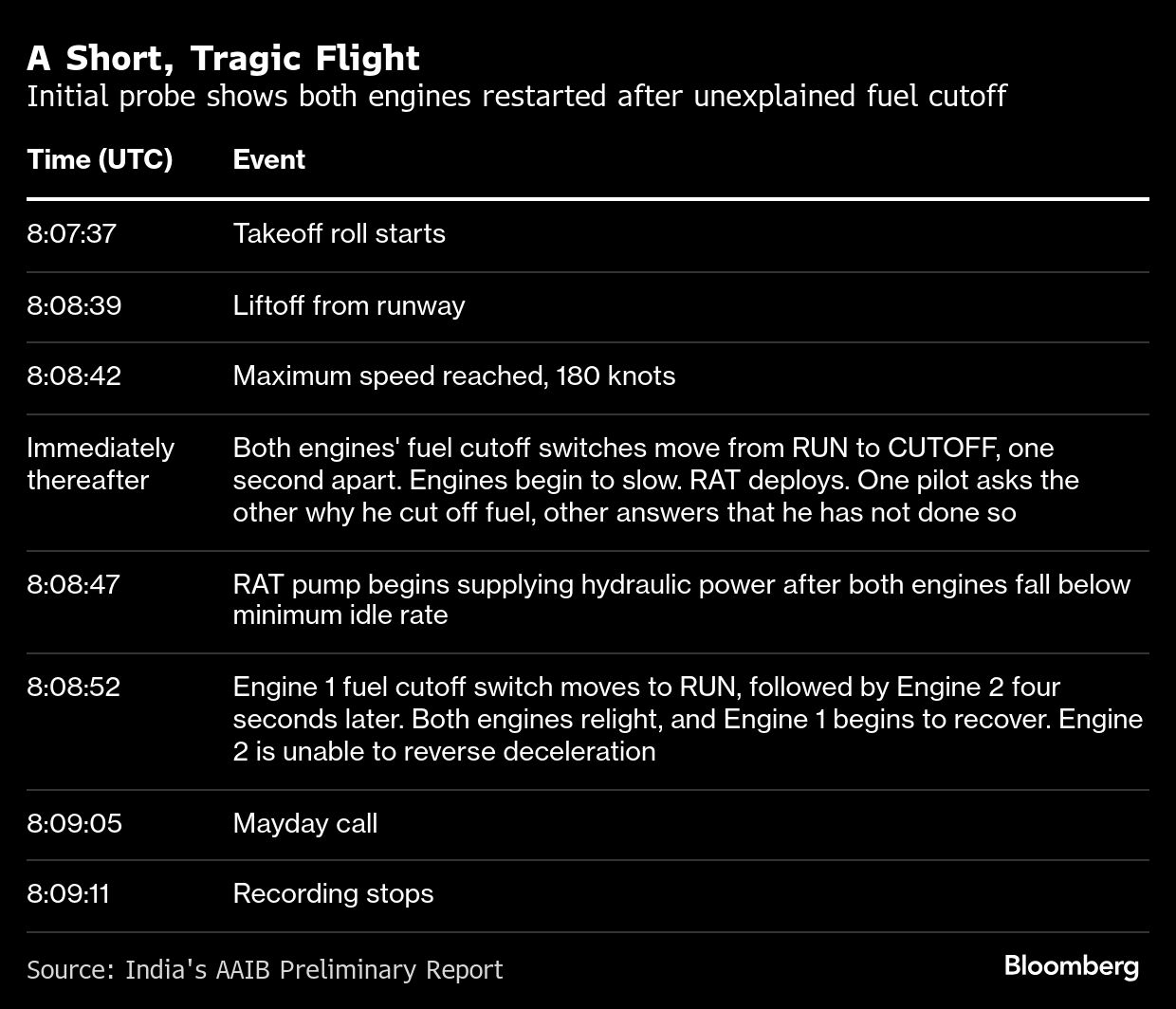Air India Jet Crashes Following Fuel Deprivation

Understanding the Tragic Air India Crash
A tragic event occurred on June 12 when an Air India jetliner, a Boeing 787 Dreamliner, crashed shortly after takeoff. The incident resulted in the loss of 241 lives on board and 19 people on the ground. A preliminary report has shed light on the events that led to this devastating accident, revealing critical details about the final moments of the flight.
Key Findings from the Preliminary Report
According to the findings, the fuel supply to both engines was cut off almost immediately after takeoff. This action caused the plane to plummet back to the ground. The pilots attempted to regain thrust but were unsuccessful in time to prevent the crash. The report outlines the sequence of events, highlighting the actions taken by the crew during those crucial seconds.
The fuel switches for both engines were moved to the cut-off position right after takeoff. It remains unclear what prompted this move. A transcript of the cockpit voice recording indicates that one pilot questioned the other about the decision, which was denied. Within 10 seconds, the switches were returned to the run position, but only one engine successfully reignited while the other failed to generate sufficient power.
Critical Moments Before the Crash
The pilots issued a “mayday” distress call just before the impact. However, air traffic controllers were unable to respond effectively as the plane crashed outside the airport boundary. The aircraft grazed some trees before colliding with a hostel filled with students. The entire duration from takeoff to the crash was approximately 30 seconds, underscoring the rapid sequence of events that led to the tragedy.
Jeff Guzzetti, a former accident investigation chief for the US Federal Aviation Administration, emphasized that while the cause of the fuel switch activation is not yet known, it is clear that the engines rolled back due to these switches being activated. He noted that the investigation will focus on determining why the switches were activated.
Implications for Aircraft Safety
The report, though preliminary, highlights the need for further investigation into the safety of the Boeing 787 and its GE Aerospace engines. Currently, there are no recommended actions for operators or manufacturers of the B787-8 and GEnx-1B engines based on the findings. The Aircraft Accident Investigation Bureau (AAIB) stated that no evidence has been found that would necessitate immediate actions.
The report also references a 2018 FAA airworthiness bulletin regarding fuel control switches on Boeing planes, including the 787. It notes that these switches could inadvertently move from the run to cutoff position without their locking mechanism engaging. However, the Air India jet was not inspected for this fault, as it was never mandatory.
Ongoing Investigation and Pilot Backgrounds
The investigation is ongoing, with the AAIB team examining additional evidence and information. A full report detailing the cause of the incident is expected to take months to compile. As part of the process, investigators are looking into the backgrounds and experience of the pilots involved.
Captain Sumeet Sabharwal and first officer Clive Kunder were at the helm of the aircraft. According to the report, the co-pilot was responsible for flying the plane, while the captain monitored the systems. Their respective flight hours on the 787 were approximately 8,500 and 1,100.
Aerospace engineer and fighter pilot Bjorn Fehrm pointed out that it was unusual for the crew to take so long to reset the switches. He emphasized that such actions should be done promptly in emergency situations, suggesting that the delay may have contributed to the tragedy.
Conclusion and Future Steps
The crash has placed the Indian carrier in a crisis, especially as it works on a turnaround under the new ownership of the Tata Group. Boeing has also maintained a low profile following the incident, given its association with another aircraft mishap. The preliminary report marks the first official explanation for the disaster, offering insights into the events leading up to the crash.
As the investigation continues, more information is expected to emerge, providing clarity on the causes and contributing factors of the tragic event. The aviation community remains vigilant, emphasizing the importance of safety protocols and continuous improvements in aircraft design and operation.
Post a Comment for "Air India Jet Crashes Following Fuel Deprivation"
Post a Comment